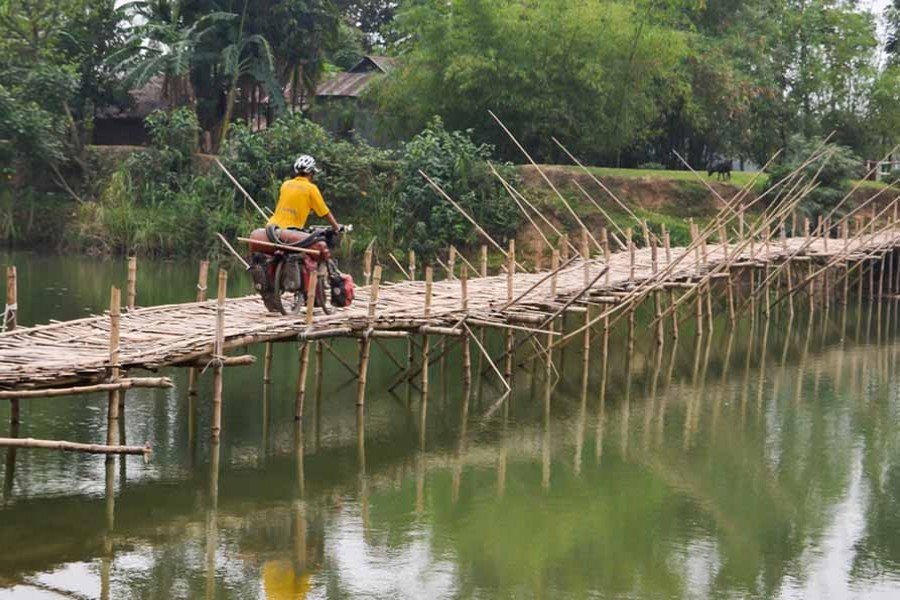
Published :
Updated :

'In a state of helplessness, self-help is the best way out', thus goes an ancient adage. The people of rural Bangladesh appear to have been in full compliance with these wise words for a long time. They deserve spontaneous thanks; they haven't shown any sign of fatigue or resentment over their back-breaking efforts to help them out of their plight. The rural chapter of going hungry or remaining half-fed is long over. Their children go to school, who get promoted to upper classes every year. The corona pandemic, however, caused a disruption. But this was somehow overcome.
The village people do not go hungry nowadays. They are tolerably employed. Almost all of them have a thatch or sliced bamboo walled hut, with tin roofs. They are well-clothed in their humble ways. A number of villagers are literally better off.
With the average Bangladesh villages offering a state of contentment, there are glaring flip sides. They comprise the broken-down and ramshackle roads, caved-in bridges and battered embankments. In this age of media accesses even into the earlier impenetrable areas, nothing remains hidden or hushed up. Photographs and TV footage of the communications infrastructure are common media topics these days. They do not evade the sight of the city-based rights activists and local NGOs, as well as the ordinary middle-class people. The activists do not fail to react to the miseries suffered by the rural people. But rebuilding a bridge or reconstructing a road or repairing an embankment is beyond their financial and infrastructural capability. The local elected authorities or the government agencies concerned are tasked with undertaking these ventures. To the ever-deepening woes of the otherwise happy villagers, these infrastructural set-ups remain in their sorry state for decades. Many might feel tempted to think that these bridges and roads normally dot the remote parts of the country. But they are found only 20/25 miles away from Dhaka. Roads that snake further into other villages to join a river port offer almost the similar dreadful looks.
Though meant for both non-motorised and motorised vehicles, few automobiles can make it to their destinations by using these roads. Their private cars or microbuses get stuck in a big crevice-like hole for hours, or a vital part of their engines breaks down irreparably, not to speak of the ordeals undergone by the smaller vehicles. These roads, to speak bluntly, are a mockery of concrete-made public thoroughfares.
Perhaps, it is the plight of the rural bridges constructed across small rivers or wide canals which emerges as a truthful representation of the country's rural communication network. Most of the concrete bridges turn into 'sakos', makeshift bamboo or wooden bridges, in three to four years after their construction by the local government authorities. In many cases, it is just the middle part of a bridge which remains in place, perhaps to remind outsiders of the fact that a concrete bridge once stood here. On the bridge users' part, many of them are made to get used to climbing the main part of a broken bridge using bamboo ladders. Scores of others cross the river or the canal underneath by small ferry boats. During this time, the bridge above appears to be an apparition.
Many elderly people stand witness to this literally absurd spectacle for as long as fifty years. Letters and ardent appeals to the authorities to construct a tolerably strong bridge go in vain. At long last, the villagers led by local young Turks with no political affiliation, join hands to build a bridge --- all this resulting from utter desperation. There is no greater remedy to adversities than unity and the time-tested spirit of self-help. At the moment, there are over a hundred bridges built by common villagers in Bangladesh.


 For all latest news, follow The Financial Express Google News channel.
For all latest news, follow The Financial Express Google News channel.